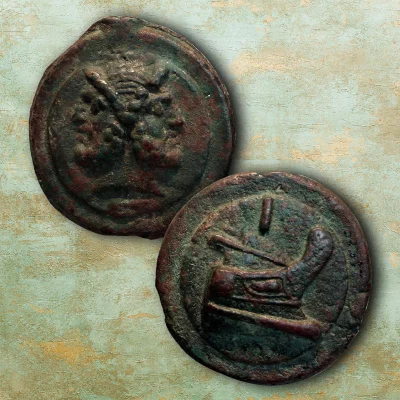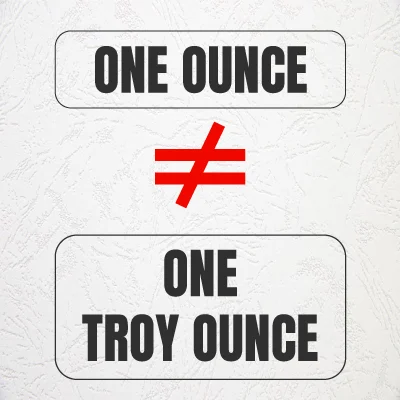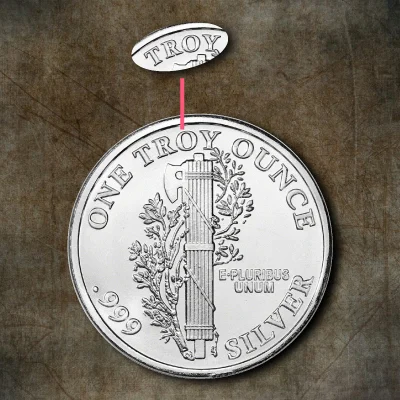
With the global adoption of the metric system, the ounce is widely used as the standard measurement for precious metals. So, when we talk about an ounce, we can't ignore the whole Troy ounce thing, which leads to some interesting discussions about Troy ounce vs ounce.
Though a global standard, an ounce is not simply an ounce. The troy ounce, which is slightly heavier than the avoirdupois ounce, has been traditionally used as the standard unit of weight for gold, silver, platinum, and palladium for numerous years.
What is a troy ounce vs ounce? An ounce and a troy ounce are two different units of measurement used in various sectors and measuring systems.
Troy ounce vs ounce is a prime debate, signifying how a prefix can affect meaning, value, and utilization. An ounce is undoubtedly the worldwide recognized measuring unit. However, the troy ounce is the industry standard for precious metals.
Thus, unawareness of the difference between troy ounces and ounces may lead to theft and fraud since fraud sellers may use it to their advantage. For instance, if an individual incorrectly believes they are buying one ounce of gold (standard) rather than one troy ounce, they might overestimate the quantity by approximately 10% in both weight and value.
We have put together all the necessary points to clarify the troy ounce vs. ounce confusion!

Troy ounce is reportedly derived from the city of Troyes in France, a great trading center for medieval goods. It would attract traders from all over Europe and beyond. "Troy" is derived from Anglo-Norman French, meaning "goods of weight."
The term ‘troy ounce’ is supposed to derive from the weights used at the famous medieval fair at Troyes, where traders weighed precious metals using the troy method.
Twelve troy ounces were in a troy pound in Troyes, and one troy ounce was equal to 480 barley grains. The pennyweight was part of the Troy system, equal to 24 grains.

The Troy system grew from the town of Troyes in France during the Middle Ages. It relies on a 12-ounce pound instead of the conventional avoirdupois scale of 16 ounces. "Troy" is supposed to have been named to distinguish bulk items from precious commodities, such as silver, which were weighed using balances.
Along with the Troy ounces, various other Troy measuring systems coexisted in Europe, such as the Holland Troy, Paris Troy, and the British Troy.
The British Troy was the most distinctive, including the troy grain, the troy ounce (20 pennyweights), the troy pound (12 troy ounces), and the pennyweight (25 troy grains).
This weight system was adopted by the British Empire in the Age of Discovery and by the United States in 1828 with the Act of the US Congress.
The troy ounce measures the weight of most precious metals, including gold, silver, and platinum; they are also priced by the troy ounce.
A single troy ounce equals 31.1034768 grams, OR about 10% more than one avoirdupois ounce, which is 28.349 grams.
The Troy system is still utilized by jewelers, merchants, and investors worldwide as it remains the standard measurement unit. It ensures that purity requirements and other aligned measurements remain constant.
Vendors, for instance, trying to quote values for their wares, can stipulate the item's weight in troy ounces; if the item weighs less and they are included, the buyer loses value.
The avoirdupois system, the most widely used unit of measurement for everyday goods in the US, uses the ounce, or "oz," as a unit of weight or mass.
In this system, one ounce is equivalent to 28.35 grams.

In addition to their apparent weight disparities, troy ounce vs ounce differ in their measurement methods. Since sixteen avoirdupois ounces make up one regular pound, a troy pound must be heavier, right? Unlike what is commonly believed, it isn't. A troy pound is only equal to 12 troy ounces under the Troy system, making it lighter.
One pound of silver weighs about 80 grams more than one troy pound. Therefore, most bullion bought and sold is measured using troy ounces or kilograms. This ensures understanding when converting between troy ounces and troy pounds. Here is the calculation which explains: Troy ounce vs. ounce
This makes 1 troy ounce roughly 10% or 0.0283 times heavier than one ounce. Similarly, one ounce is 0.097 times lighter than one troy ounce. This might seem negligible, but bullion purchases critically impact the prices and value.
For instance, purchasing a 100 oz silver bar will bring you 2,834.95 grams of silver when it should actually bring 3,110.35 grams. This created a difference of 275.4 grams, which heavily impacts your investment and portfolio.
The one troy-ounce weight is the new standard for weighing precious metals. However, the standard measurement units differ among regions or countries. The following table illustrates the various units that are equivalent to 1 troy ounce.
| Measuring Units | Equivalent to 1 Troy Ounce |
|---|---|
| Standard Ounce (oz) | 1.097 |
| Kilograms (Kg) | 0.0311 |
| Grams (Gms) | ~31.103 |
| Pounds (lbs) | 0.0685 |
| Carats (ct) | 155.517 |
| Barley Grains (gr) | 480 |
| Pennyweights (dwt.) | 20 |

It is crucial to understand that you are buying and paying for the product with the weight of troy ounce instead of ounce. Certain unverified/fraudster dealers tend to sell bullion in ounces for the price of troy ounces, and since troy ounces are heavier than ounces, you are unfortunately fooled.
Thoroughly observe for weight inscriptions on the product and its spot price, and buy from a verified bullion dealer only!
Identifying troy ounces can be more accessible when buying from a verified and trusted bullion dealer. However, the product includes the inscriptions, ensuring it is produced in troy ounces rather than ounces. You will observe imprints like “ONE TROY OUNCE,” “1 TROY OZ,” or “1 OZ,” where all of them depict one troy ounce. Also, keep an eye out for the bullion spot prices to estimate the offered price, as the spot price is the market price of one troy ounce of a particular metal.
With this, you can save your hard-earned money from fraud and theft and ensure a healthy investment journey!
One troy ounce is indeed heavier than one standard ounce. In the precise measurement, it is 10% heavier than the standard one ounce, with a ratio of 1.0:1.097.
In conclusion, it is very important to know the difference between a troy ounce and an ounce, especially when buying, selling, and trading precious metals. While the difference in weight may seem minute, it can lead to vast value differences in larger bullion and for longer periods.
The troy ounce has been used for several centuries and is currently the standard measure for these precious metals. Knowing the difference between the units of measurement will help you make a sound decision when you're buying, selling, or investing by preventing possible confusion.
As a verified and trusted dealer affiliated with renowned mints and refineries, BOLD makes this daunting task seamless with our easy-to-navigate website and dedicated customer service team!